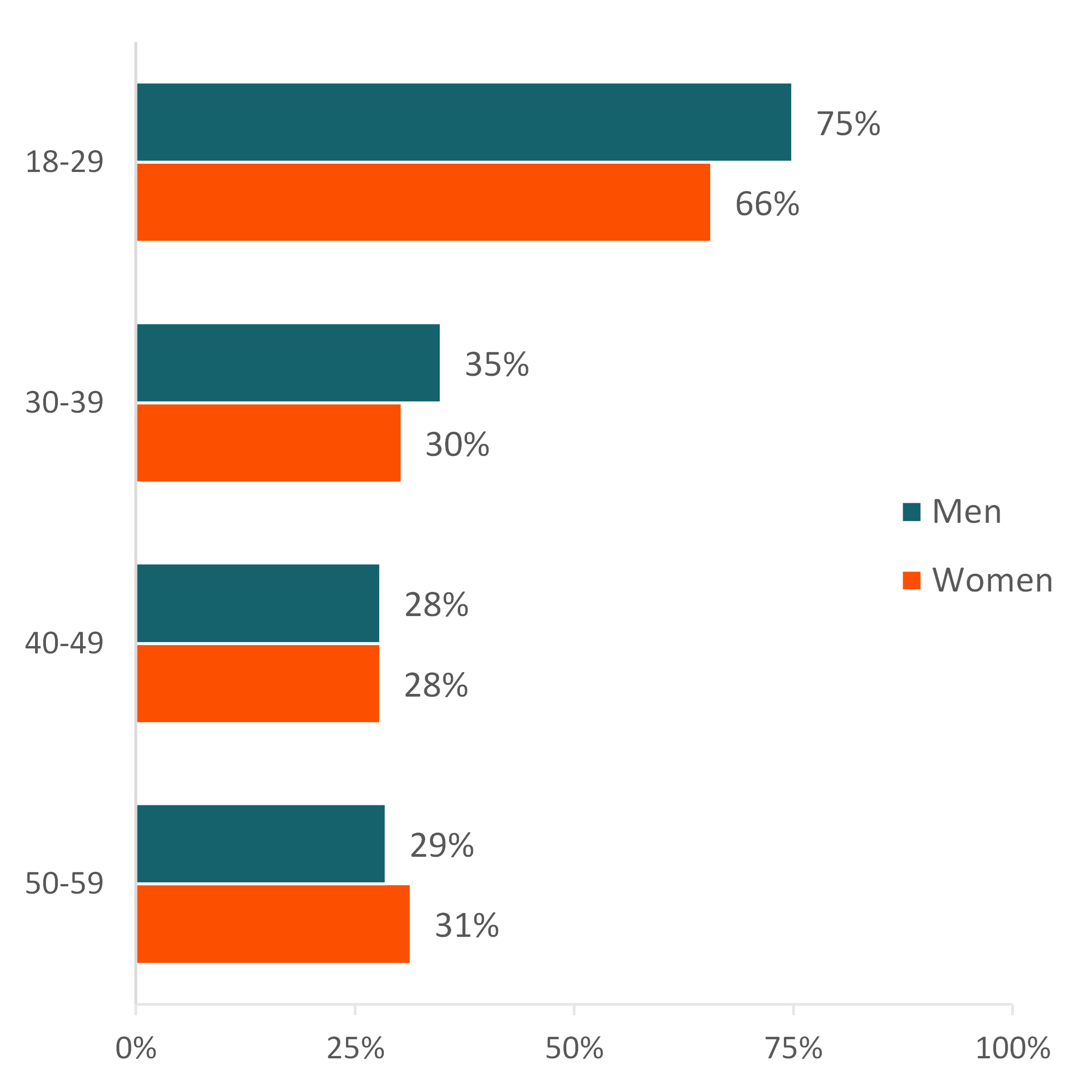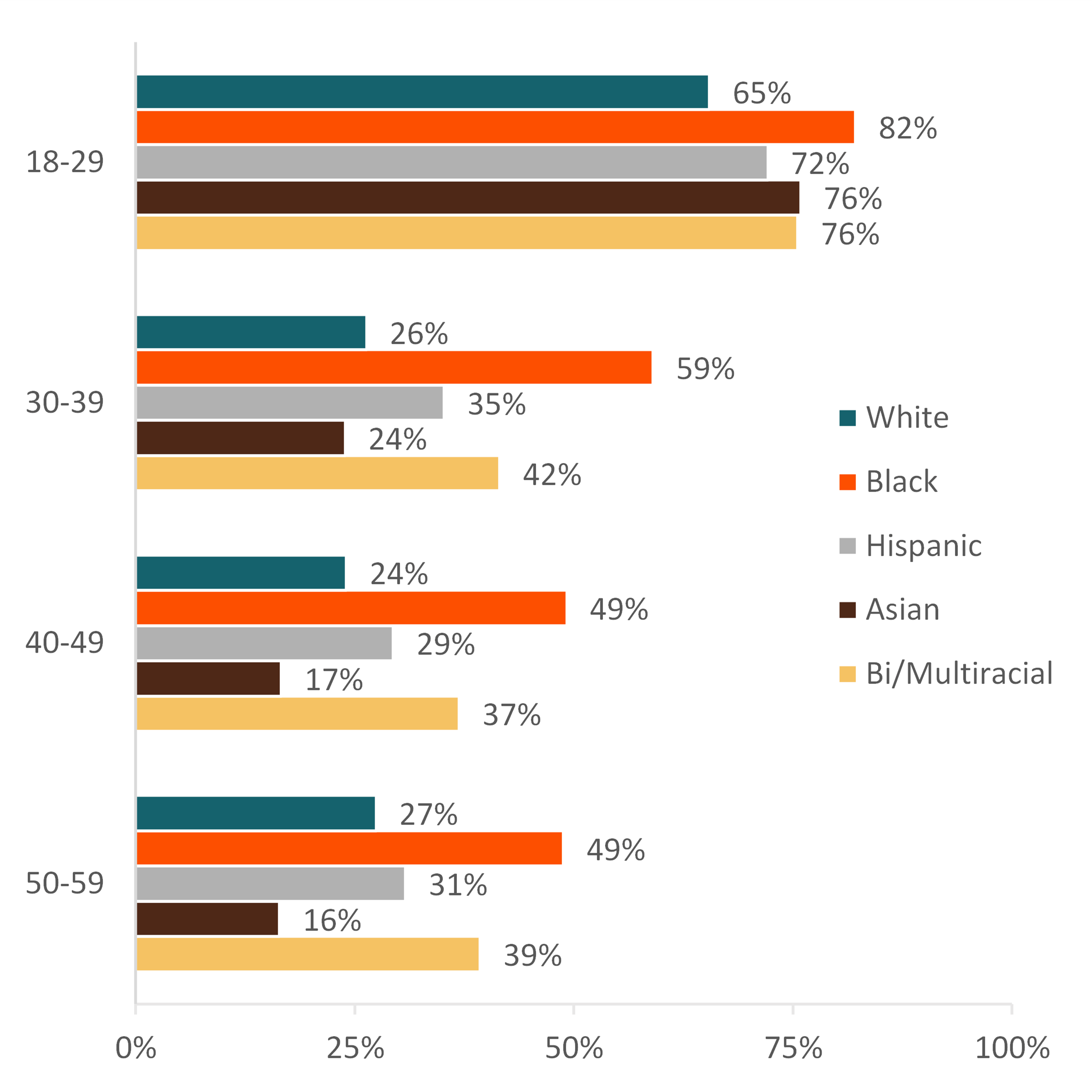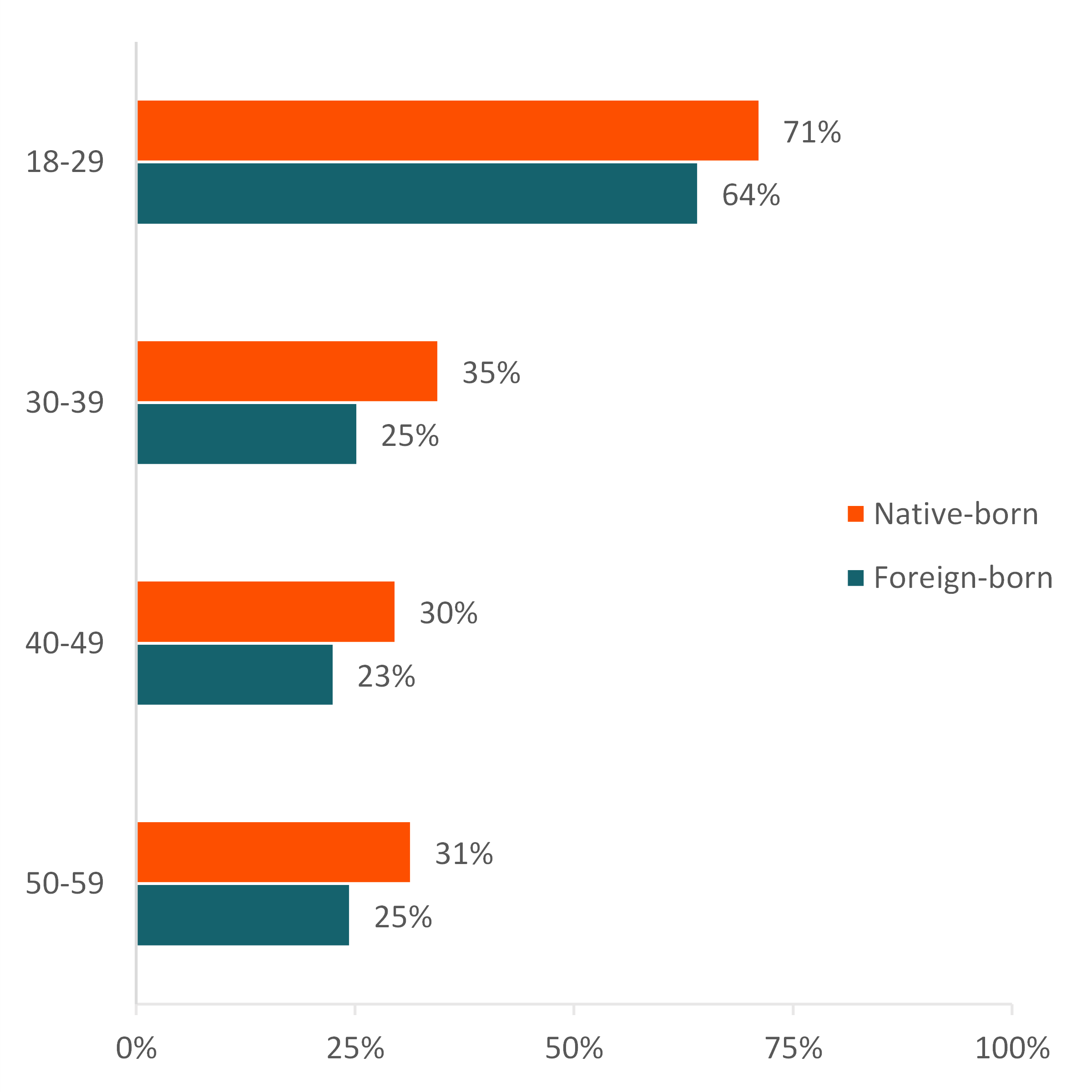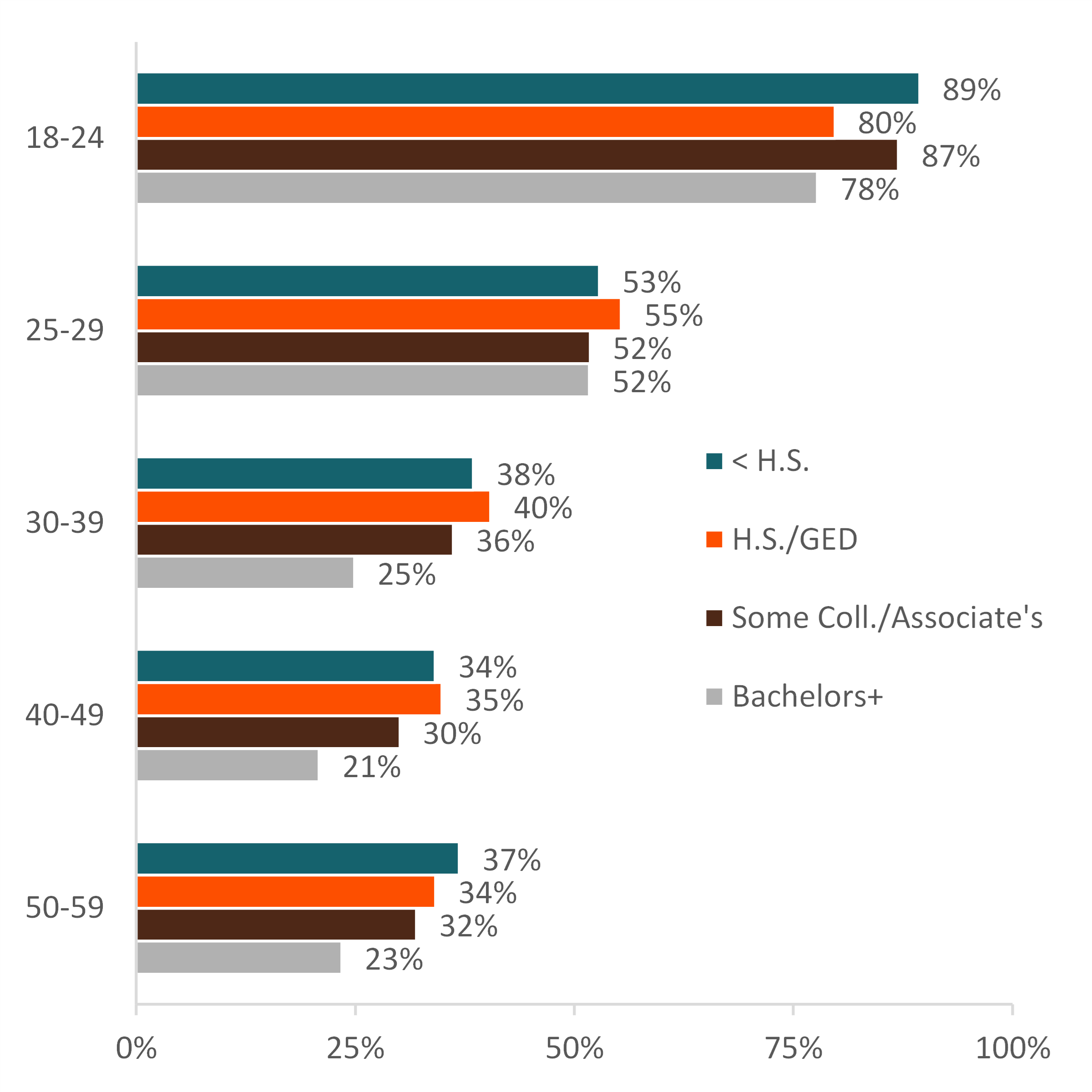Age Variation in Singlehood from Young Adulthood to Midlife, 2022
Family Profile No. 11, 2023
Author: Gabrielle Juteau
In 2022, 40% of adults were single—not currently in a cohabiting or marital union (Juteau, 2022). Singlehood is partly dependent on the timing of entry into unions, but also the dissolution of these unions across the life course. Hence, some singles are never married, and others are previously married. We use data from the 2022 Current Population Survey (CPS) in this Family Profile to assess singlehood from young to middle adulthood, differentiating four age groups: 18-29, 30-39, 40-49, and 50-59. We present the age variation in singlehood according to gender, race and ethnicity, nativity, and educational attainment. Singlehood is defined as not currently being married or cohabiting.
Gender and Singlehood Across Age Groups
- The largest difference in the gender distribution of singles by age was within the youngest age group. The share of young adults aged 18-29 was higher for men than women (75% compared to 66%). The gender difference among individuals lessened in their thirties (35% for women, 30% for men).
- Among those between the ages of 40 and 49, women and men shared similar levels of singlehood. Then, among adults aged 50-59, the share of singles was slightly higher for women than men (31% compared to 29%).
Figure 1. Share of Single Individuals, by Age Group and Gender, 2022

Race/Ethnicity and Singlehood Across Age Groups
- Among individuals in the youngest age group, Black adults had the highest level of singlehood at 82% followed by those who identified as Asian and Multiracial (both 76%). White young adults had the lowest prevalence of singlehood in the 18-29 age group (65%) followed by Hispanic adults at 72%.
- Among individuals aged 30 to 39 years, about three-fifths (59%) of Black individuals and more than two-fifths (42%) of Multiracial individuals were not in a coresidential union. Asian adults were the ethnic group with the lowest proportion (24%) of singles followed by White adults (26%).
- Nearly half of Black individuals in their forties and fifties were single in 2022. Approximately 30% of Hispanic midlife individuals were single. Asian midlife adults had the lowest share of singlehood (17% among those aged 40-49, and 16% among those aged 50-59) followed by White midlife adults (24% among those aged 40-49, and 27% among those aged 50-59).
Figure 2. Percentage of Single Individuals, by Race and Age Group, 2022

Nativity Status and Singlehood Across Age Groups
- Compared to foreign-born individuals, larger shares of native-born individuals were single. Among the age groups examined, the greatest difference was among those in their thirties with more than one-third (35%) of native-born adults being single compared to one-quarter (25%) of foreign-born adults.
Figure 3. Percentage of Single Individuals, by Nativity Status and Age Group, 2022

Educational Attainment and Singlehood Across Age Groups
- The share of 18–24-year-old adults who were single ranged from 89% among those with less than a high school degree to 78% among those with at least a bachelor’s degree, however the relationship was not linear. Those with less than a high school-level education had a similar share single as those with some college education or an associate degree, whereas those with a high school diploma/GED were similar to those who had received a bachelor’s degree.
- Among young adults aged 25 to 29 years old, there was no educational gradient in singlehood. At every educational attainment level, about half of adults were not in a co-residential relationship.
- The educational differentials in singlehood were greatest for those over age 30. About one-fifth to one-fourth of adults with at least a bachelor’s degree were single. In contrast, 34-40% of individuals with a high school diploma/GED were single.
Figure 4. Percentage of Single Individuals, by Educational Attainment and Age Group, 2022

Data Source:
Flood, S., King, M., Rodgers, R., Ruggles, S., Warren, J. R., & Westberry, M. (2021). Integrated Public Use Microdata Series: Current Population Survey: Version 9.0 [dataset]. Minneapolis, MN: IPUMS. https://doi.org/10.18128/D030.V9.0
References:
Juteau, G. (2022). Characteristics of single adults in the U.S., 2022. Family Profile, FP-22-30. National Center for Family & Marriage Research. https://doi.org/10.25035/ncfmr/fp-22-30
Suggested Citation:
Juteau, G. (2023). Age variation in singlehood from young to midlife adulthood, 2022. Family Profile, FP-23-11. National Center for Family & Marriage Research. https://doi.org/10.25035/ncfmr/fp-23-11
Updated: 11/07/2025 04:30PM


